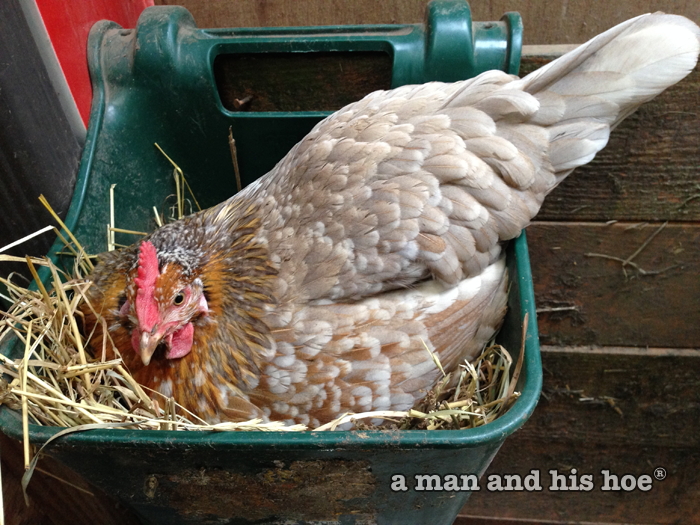
Each hen has her favorite nesting spot. Some hens stick to using the same nest for months. Other hens switch nests daily, weekly, monthly. No two hens are exactly alike. In any case, I’ve never met a hen which did not like to move a lot every day. Not just a few steps, but huge distances. When you take into account their size in relation to a human’s, it would be like a human walking five to ten miles a day. Chickens are on the move much of the day, and cover vast distances in a short time.
So I wonder what happens to the mental state of a hen in a cage. She’s imprisoned and has to use the same spot day in and day out. Most hens in an egg laying operation don’t even have a nest. They are trapped in a metal cage with no straw, no bedding. Their feet only touch metal their whole lives. As soon as they lay their egg, it rolls out of the cage and is whisked away on a conveyer belt.
What is it like for a hen to live in a metal box her whole life and never experience nestling into a comfortable straw nest? What is it like to see her eggs go rolling away? My guess is that most hens trapped in these egg laying factories develop severe mental problems. They aren’t designed to be treated in such a way. Even though they have very tiny brains, they still have many needs, and very few of those needs are ever met in a metal cage. How does this affect the quality of the eggs these hens lay? I’ve never found a store egg to have the vibrancy of my eggs. What are the effects of most people eating such poor quality eggs?
Perhaps it is time for food consumers to be more concerned about the quality of the food they buy, and the impact their food choices have on the well being of the animals producing their food. As I often say, that egg, that meat, those vegetables you eat are going to become you. Do you want your body to build your bones, skin, organs, with poor quality, ho-hum materials or with superb materials?

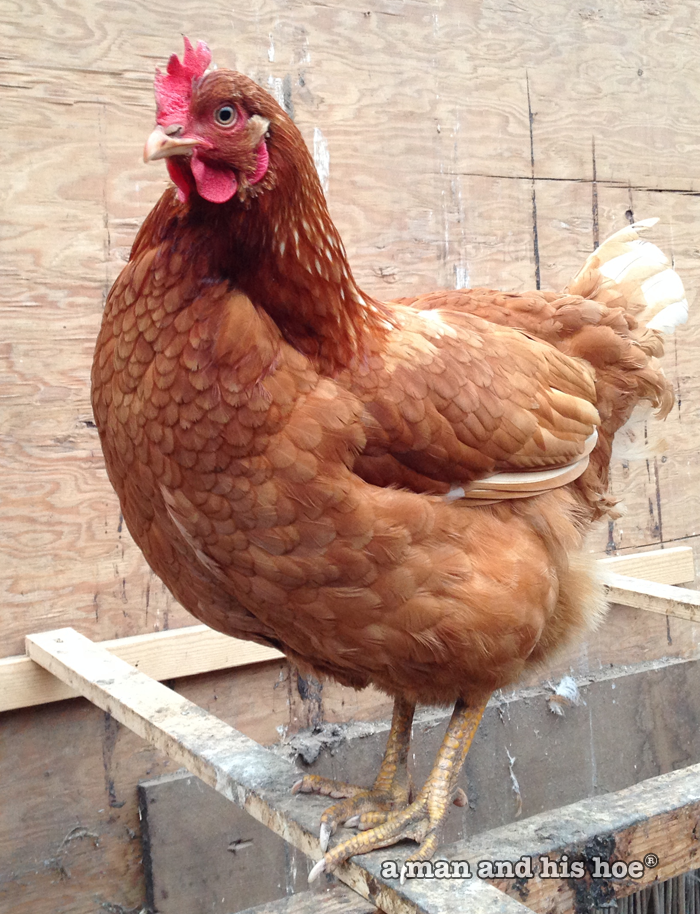

 Of course, a hen doesn’t have a servant to bring her food and water. At least once a day, she has to leave the nest to eat, drink, go to the bathroom, and get some exercise.
Of course, a hen doesn’t have a servant to bring her food and water. At least once a day, she has to leave the nest to eat, drink, go to the bathroom, and get some exercise.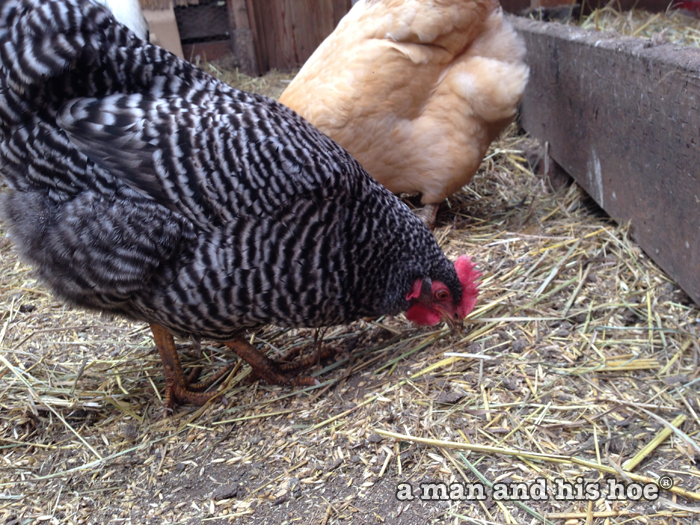 Afterwards, she is back on her nest until the next day.
Afterwards, she is back on her nest until the next day.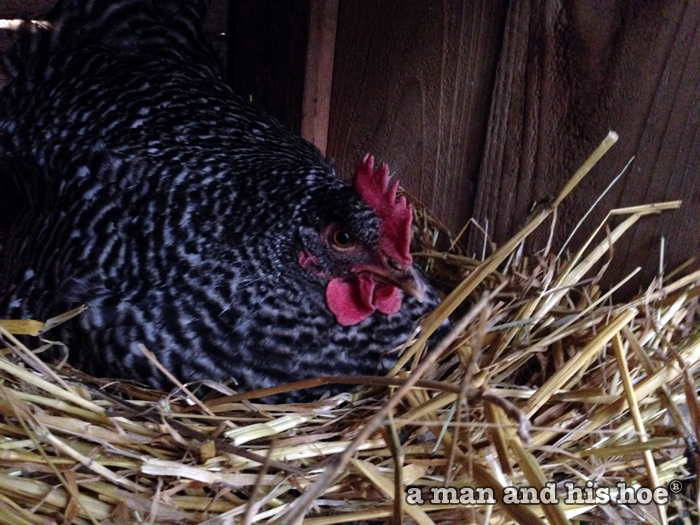
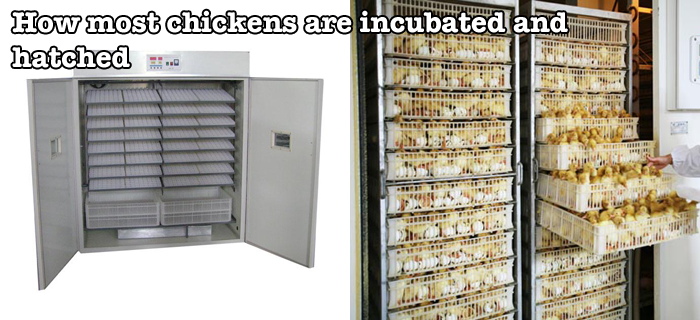
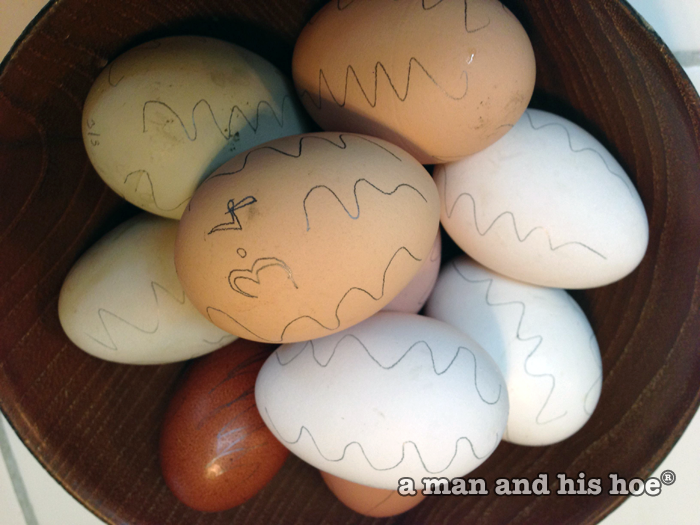
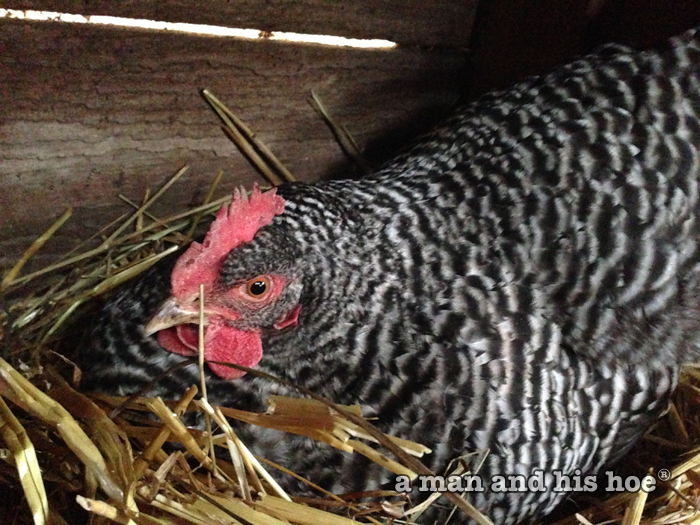
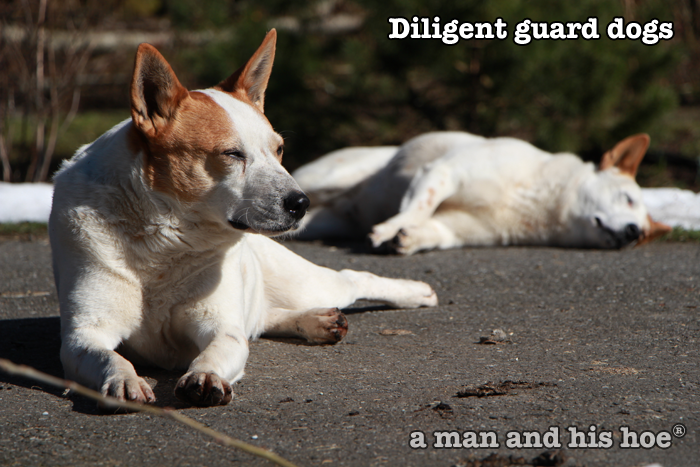 A pair of fearless guard dogs are a necessity when you are raising free-roaming chickens. You need vigilant ears, eyes, and noses on the lookout for coyotes, eagles, and hawks. They look like they are snoozing and not paying any attention. But at the slightest whiff of danger, these two are on their feet and charging after any approaching danger.
A pair of fearless guard dogs are a necessity when you are raising free-roaming chickens. You need vigilant ears, eyes, and noses on the lookout for coyotes, eagles, and hawks. They look like they are snoozing and not paying any attention. But at the slightest whiff of danger, these two are on their feet and charging after any approaching danger.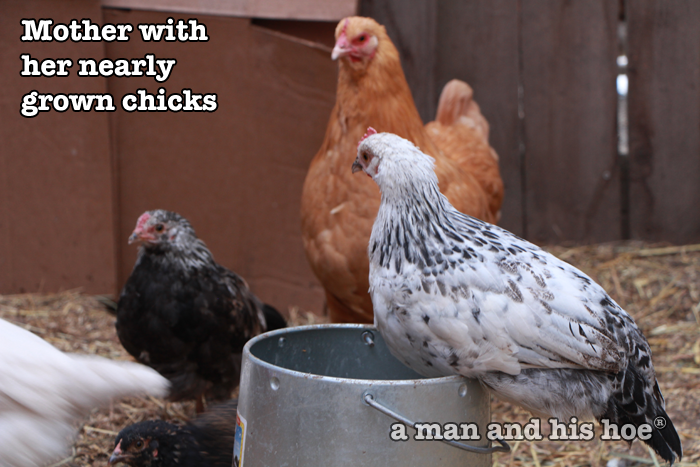 These chicks are two and a half months old now. At times they are quite independent, but they still stay close to their mother and roost with her at night. The other night I couldn’t see the white one, until I peered closely at the mother’s feet, and saw the chicks feet between her mother’s. She was roosting underneath her mother.
These chicks are two and a half months old now. At times they are quite independent, but they still stay close to their mother and roost with her at night. The other night I couldn’t see the white one, until I peered closely at the mother’s feet, and saw the chicks feet between her mother’s. She was roosting underneath her mother. We are in the wet season. A steady rain all day doesn’t stop the chickens from being outdoors most of the time. Even when they get soaked, like Billy the rooster, they seek cover only when it is pouring rain.
We are in the wet season. A steady rain all day doesn’t stop the chickens from being outdoors most of the time. Even when they get soaked, like Billy the rooster, they seek cover only when it is pouring rain.